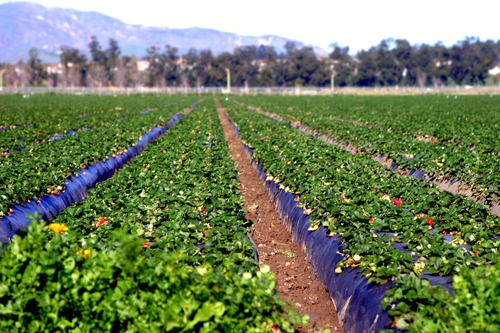
GAINESVILLE, Fla. — When the next frost threatens Florida’s crops, growers will do their best to make sure your favorite foods are protected from the potentially crippling chill, say University of Florida Institute of Food and Agricultural Sciences experts.
For example, citrus growers use wind machines and micro-sprinklers to ensure freezing temperatures don’t ruin the fruit, said Chris Oswalt, a multi-county citrus Extension agent for UF/IFAS Extension Polk and Hillsborough counties.
Wind machines, which increase grove temperatures, work best in windless freezes, Oswalt said. Under such conditions, air above the ground is warmer than it is at the surface.
Growers use wind machines in “cold pockets,” lower elevations of Florida’s ridge, where dense cold air drains on freezing nights. The “ridge” is an area in central Florida around U.S. 27, near Haines City and Lake Wales. Each wind machine protects about 10 acres, Oswalt said.
Growers most frequently use low-volume micro-sprinkler to protect from freezes, he said. When they do so, growers apply warm well water to plants, and the freezing of this water produces additional heat, thus protecting the plant.
“Currently, micro-sprinkler irrigation is the most widespread method of freeze protection used for Florida citrus,” Oswalt said. “This is a very efficient method that directs the right amount of water where it can provide the most freeze protection.”
Strawberry growers typically irrigate their plants with sprinklers to prevent freeze damage, UF/IFAS researchers say. This method is convenient and can be highly effective, although it can also damage fruit.
Most of the freezes in Hillsborough and Manatee counties — where most of the state’s strawberries grow – come with little or no wind, and temperatures typically dip to the low 30s or high 20s. In these freezes, growers will generally wait until the air just over the plastic mulch is 31 degrees before they turn on their sprinkler irrigation system, according to research at the UF/IFAS Gulf Coast Research and Education Center in Balm.
On the other hand, most vegetable growers in central and southwest Florida don’t protect their plants from freezes, per se, said Alicia Whidden, a vegetable and small fruit agent with UF/IFAS Extension Hillsborough County.
“The grower may remove a frost by washing the plant to try to save a crop for harvest, but if it is a freeze, he or she would let the crop go,” Whidden said. “This time of year, it is late in the season for veggies. Growers try to hit the Thanksgiving market, and — if there is no freeze and they can harvest for the Christmas market — that is great, but not a given every year.”
In early spring, a grower might go to extra lengths to save young seedlings or transplants, Whidden said. Methods depend on crop, size of fields and weather. They may use overhead water or cover each transplant with a stryofoam cup if they are small enough. Growers also might use row covers to protect the young plants.
“They try to plant after they think the last frost will happen, but some years a late frost gets us,” Whidden said.
Source: UF/IFAS
Share this Post









